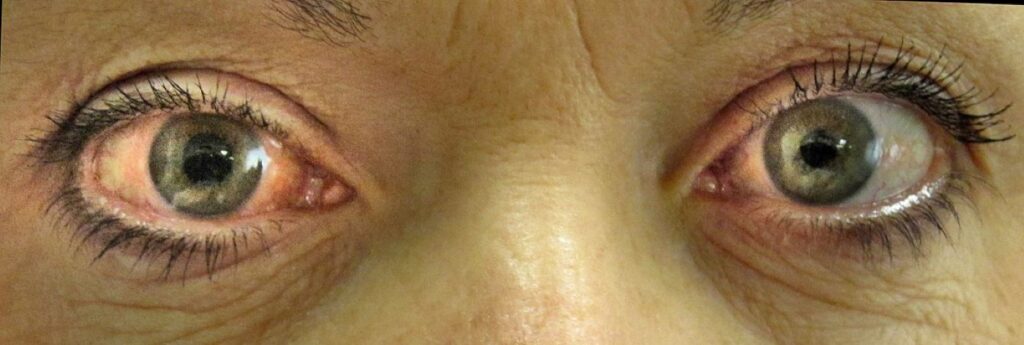Health Conditions
Discovering What Really Causes Glaucoma
Glaucoma, a complex eye condition affecting millions worldwide, remains a top concern in ophthalmology. Yet, its exact origins have eluded definitive explanation, leading to ongoing research and exploration.
Are you seeking answers to the mysterious causes of glaucoma? Look no further. In this article, we will delve deep into the fascinating world of glaucoma and uncover the truth behind its origins.
Understanding the Anatomy of the Eye
Understanding glaucoma requires a fundamental understanding of the anatomy of the eye. The eye is a sophisticated and sensitive organ made up of multiple elements that work together to provide vision. The cornea, iris, lens, retina, and optic nerve are the most important components.
The cornea is the transparent front component of the eye that refracts light onto the lens. The iris, a colorful component of the eye, controls the quantity of light that enters the eye through its adjustable opening known as the pupil. The lens focuses light onto the retina, which is a layer of light-sensitive cells in the rear of the eye. Finally, the optic nerve sends visual information from the retina to the brain for interpretation.

How Glaucoma Affects Vision
Glaucoma is a silent robber of vision. It gradually destroys the optic nerve, resulting in irreversible vision loss if not treated. Glaucoma puts pressure on the optic nerve, impairing its function and causing gradual vision loss.
Glaucoma may not display any symptoms at first, making early detection challenging. As the illness worsens, peripheral vision loss may occur, resulting in blind spots. Glaucoma can cause blindness if left untreated.
Types of Glaucoma
There are various varieties of glaucoma, each with its own set of symptoms and causes. The most frequent kinds of glaucoma are open-angle, angle-closure, normal-tension, and secondary glaucoma.
Open-angle glaucoma is the most common type, accounting for approximately 90% of all glaucoma cases. It occurs when the eye’s drainage angle gets partially obstructed, causing a progressive increase in intraocular pressure.
Angle-closure glaucoma occurs when the eye’s drainage angle gets totally blocked, resulting in a dramatic increase in intraocular pressure. This kind of glaucoma necessitates quick medical intervention to avoid vision loss.
Normal-tension glaucoma is a distinct type in which optic nerve damage develops despite normal intraocular pressure levels. The specific cause of this form of glaucoma is not entirely known.
Finally, secondary glaucoma is induced by an underlying medical condition, such as diabetes or ocular damage. Treating the underlying cause is critical for managing this kind of glaucoma.

Risk Factors for Developing Glaucoma
While anyone can get glaucoma, various risk factors enhance the chances of it happening. Increasing age is a key risk factor, with people over the age of 60 being more vulnerable. Furthermore, having a family history of glaucoma raises the risk of developing the disease, implying a genetic component.
High blood pressure, or hypertension, is another risk factor for glaucoma. Elevated blood pressure can disrupt the delicate balance of fluid in the eye, resulting in increased intraocular pressure.
Diabetes, myopia, and previous eye injuries all increase the chance of getting glaucoma. Individuals with these risk factors must remain watchful and have regular eye exams.
Common Symptoms of Glaucoma
Glaucoma is referred to as “the silent thief of sight” since it may not cause any visible symptoms in its early stages. However, as the illness advances, some typical symptoms may appear. These include a gradual loss of peripheral vision, the impression of tunnel vision, blurred vision, halos surrounding lights, and red eyes.
It is crucial to remember that causes might differ based on the type of glaucoma and the stage of the disease. Regular eye exams are critical for early detection and prompt treatment.

Diagnosing Glaucoma: Tests and Examinations
Diagnosing glaucoma entails a set of tests and examinations that analyze the health of the eyes and identify any abnormalities. Tonometry, which evaluates intraocular pressure, visual field tests to check peripheral vision, and imaging techniques for evaluating the optic nerve.
Regular eye examinations, especially in the absence of symptoms, are critical for early detection and treatment of glaucoma. Early intervention can greatly decrease the progression of the disease and protect vision.
Treatment Options for Glaucoma
While there is no cure for glaucoma, numerous therapeutic options exist to help control the illness and prevent additional visual loss. The primary goal of treatment is to reduce intraocular pressure to a safe level and maintain it.
Eye drops are widely used to lower intraocular pressure by either decreasing fluid production or enhancing outflow. In some circumstances, oral drugs may be administered to enhance the benefits of eye drops.
In more severe situations, laser therapy or surgery may be indicated. Laser trabeculoplasty improves fluid outflow from the eye, whereas surgical methods build new drainage channels or implant drainage devices to reduce intraocular pressure (IOP).

Lifestyle Changes to Manage Glaucoma
In addition to medical treatments, lifestyle adjustments can assist control glaucoma and lower the risk of additional visual loss. These include eating a nutritious, antioxidant-rich diet, staying at a healthy weight, exercising regularly, quitting smoking, and managing stress.
These lifestyle adjustments should be discussed with a healthcare practitioner or ophthalmologist to verify they are appropriate for the individual’s personal needs and general health.
Conclusion
Glaucoma is a sight-threatening illness that requires early detection and treatment for best results. Regular eye examinations, particularly for those with risk factors, are critical in detecting glaucoma in its early stages, when therapies are most successful.
Understanding the underlying causes, risk factors, and symptoms of glaucoma allows people to take proactive efforts to protect their vision. Remember that early detection is critical, so schedule frequent eye exams and speak with healthcare specialists for individualized care and assistance.
Join us on this adventure as we uncover the mysteries of glaucoma and work to develop viable therapies and prevention techniques.
Trusted Health, Wellness, and Medical advice for your well-being



